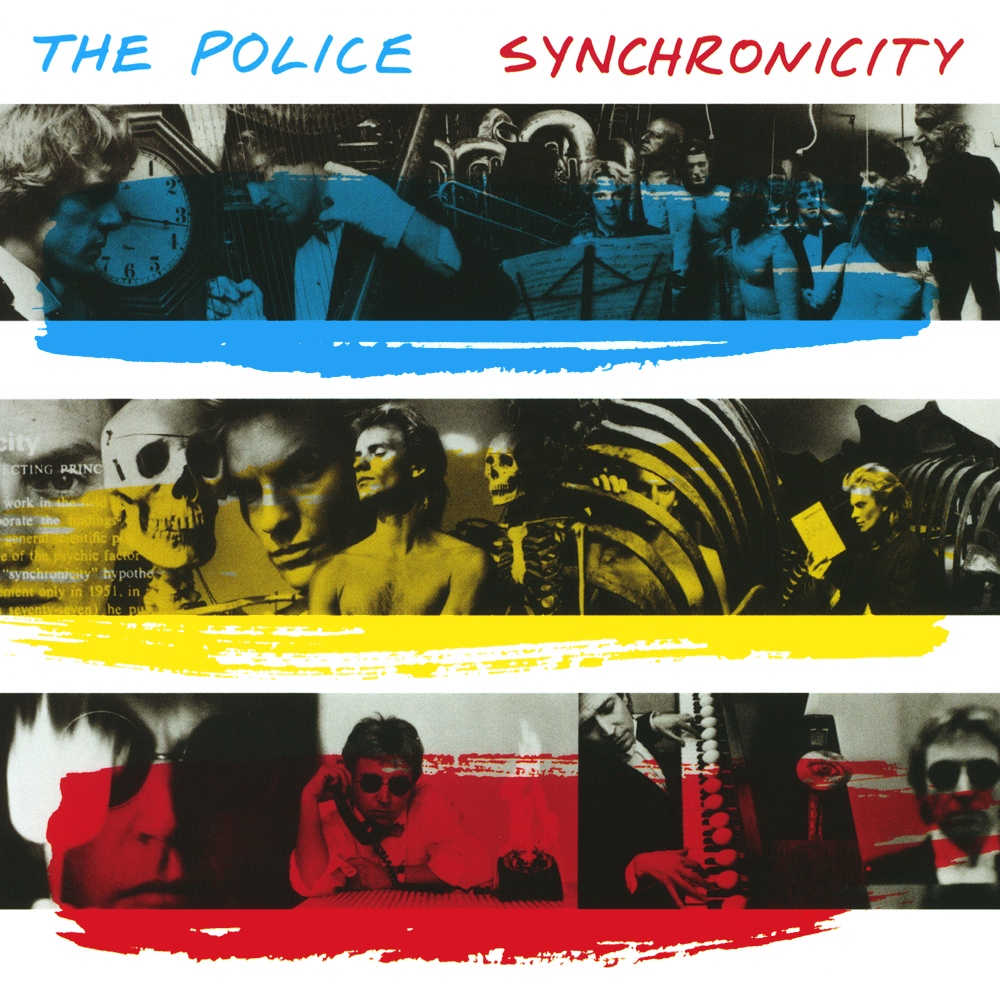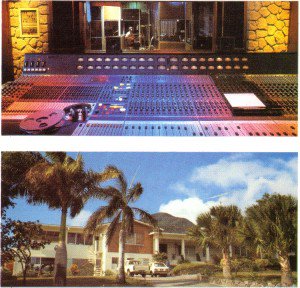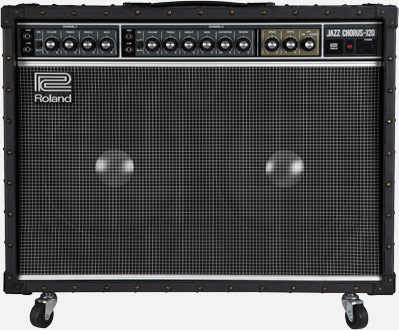‘Synchronicity’ by The Police Turns 35: How Producer Hugh Padgham Survived the Experience
Plastered against the wall. Practically hyperventilating.
That’s me, headphones on, listening full blast to Synchronicity by The Police. And not just anything off that masterpiece – which was released 35 years ago this week in 1983 – but the opening song, “Synchronicity I.” It was that track that woke me up to a new dimension of drummer Stewart Copeland’s genius ability, namely his speed and power.
I tell all my friends this: Try listening to “Synchronicity I”, and for the entire 3:23 don’t take your ears off the drums. I’m not saying to shut out Andy Summers’ introspective guitar lead, nor Sting’s searching vocals and pulsating bass. Just position the drum track front and center in your mind, then hold it right there.
Think you can do it? Are ya sure? Because what ensues is one of the most exhilarating rock drum performances in recorded history. It starts with a tense ride on the, uh, ride, then spills into a fast beat of high hat, kick and snare, the three gelling with blinding speed headed into the electrifying first verse. A drummer myself, I’ve found that matching Copeland’s quick pace there is not as easy as it would seem – long before the first chorus arrives my forearm and wrist seize up, or my legs just break down.
An air of complete control and his famed high-hat flourishes accompany the constant velocity. Switching from the hat to the ride in the enthralling first chorus of “Synchronicity I,” he is set a little bit free to sprinkle his trademark surprises around: a flam here, pingy-ping there. Then there are splashes and crashes, including one transitioning to the second verse — which is a little unusual for Stewart Copeland. One of his signature nuances is to not always strike a cymbal after a fill, where so many other drummers would. Perhaps this stylistic suspension is telegraphing the band’s surging energy.
On through the accelerating second and third verse/chorus until we arrive at my personal apex: that killer fill Copeland unleashes around 1:58. It’s a brilliant skipping interplay between the kick and snare – halting, fluid and crushing all at once. Next comes that quick “&-uh” kick-kick transition and all three of them take a new turn, setting course with something not quite a verse, not quite a chorus, not quite a bridge, just one intergalactic pre-outro: “It’s so deep, it’s so wide/Your inside/Synchronicity/Effect without a cause/Sub-atomic laws, scientific pause/ Synchronicity/ Synchronicity/ Synchronicity/ Synchronicity/ Synchronicity/ Synchronicity/ Synchronicity/ Synchronicity/ Synchronicity/ Synchronicity/Whew!”
The guys have actually pulled back a little there, slightly relaxing the tempo after the inspired rush. You notice Copeland – especially if you’ve managed to keep your ears on the drums this whole time – enters yet another mindset. Now he’s holding it focused, steady, throwing in some tribal toms as he pushes his bandmates forward.
From then on, Copeland’s zag is not to zig: he’s simply a relentless source of clean power, marching The Police towards a fadeout that goes dark, then explodes into the immersive mindblow of “Walking In Your Footsteps.” He demonstrates a similar discipline five cuts later throughout “Every Breath You Take,” the song that the master rhythmatist calls his most masterful recorded performance.

Eye of the Storm
Capturing all that on tape, laser-focused on AIR Montserrat’s legendary Neve console, was Synchronicity’s producer, Hugh Padgham.
A young gun at the time, Padgham got hot quickly in the early 1980’s, serving as a recording engineer on projects such as Peter Gabriel’s solo LP Melt (“I Don’t Remember,” “Biko” and “Games Without Frontiers”), XTC’s Black Sea and Yes’ Drama. Then in 1981, Padgham produced and mixed The Police’s triple platinum Ghost in the Machine with tracks like “Spirits in the Material World,” “Every Little Thing She Does Is Magic” and “Invisible Sun” (I of course tripped out regularly on the Stewart Copeland-penned “Darkness,” which lays bare his love affair with the high-hat.) Phil Collins’ 5X-platinum Face Value was also in 1981, (“In The Air Tonight” and “I Missed Again”) and Genesis’ 2X-platinum Abacab (“No Reply at All”, “Abacab,” “Me and Sarah Jane” and “Man on the Corner”).
Going into the Synchronicity recordings, Padgham was blindsided by The Police’s now well-documented drama. It’s all laid out in grisly detail by Summers in his enthralling memoir One Train Later. It explains precisely why The Police were supremely confident they were the best band in the world, and equally cognizant they may never record together again (see the full 2017 SonicScoop interview with Andy Summers here).
“I had great expectations of the recording of what was to become Synchronicity,” Padgham recalls. “Ghost in the Machine had been very successful and was seen as a departure from the band’s first three albums with a more ‘produced’ sound. It had been a fun album to record and although relations between the three guys had been highly competitive, in my opinion it was just them being themselves and really like a family where underneath it all everybody loved each other.
“I had been to visit Sting in London at Utopia Studios to listen to the demos of the songs he had written,” he continues. “I remember hearing the ‘Every Breath You Take’ demo for the first time and Miles Copeland was there in the room too. We realized we were staring a hit in the face. In typical Miles fashion he said to me something along the lines of: ‘This will be a massive hit, so don’t fuck it up boy!’”
Other than listening to these demos there was no other pre-planning of the recording of the album. “I expected all of us just to turn up and get on with it,” says Padgham. “All I knew was that we had a bunch of great songs from Sting, and that we’d sort a few songs out from Stewart and Andy when we were there in Montserrat.
“I never really saw the guys much from the end of Ghost in the Machine to the new album because they were always on tour. I didn’t know that personal relations between them had deteriorated so much.”
Minefield in Montserrat
Padgham had every reason to be fully confident going in to the Synchronicity sessions. He had developed his own big reputation parallel to Ghost in the Machine, and he knew the AIR Montserrat recording facility inside and out.
“The studio in Montserrat was fantastic,” Padgham says. “It was very quiet and discreet as it was on an island that very few tourists visited, which therefore suited high-profile artists and bands very well. They weren’t going to get hassled and it had an exotic feel to the place being in the Caribbean.
“Having been built by George Martin and his crew from AIR Studios in London, it was also technically very up-to-date with all the best equipment and more. As we had recorded and mixed Ghost in the Machine there we were totally familiar with the place when we returned.”
Padgham concedes he had some issues with the acoustics of the main studio recording room. “It sounded too dry for me and therefore was not the best environment for getting the exciting and crisp drum sound that I wanted. The only other place possible to record the drums that was more ‘live’ was the dining room which had wooden walls and floor but no glass in the windows, so that at night when the tree frogs started making a racket you couldn’t record as you heard them through the mics!
“We got a great sound in that room, but it did have its benefits and its drawbacks. The benefit being that not only was it a great sound but Stewart didn’t have to be in the same room as Sting, as that would be tantamount to a fight breaking out at any point! The downside was that communication between Sting and me in the control room and Stewart in the dining room wasn’t very good. We had to set up a camera in front of the drum kit so we could see him but he couldn’t see us, only hear us if we spoke to him over the recording console talkback into his headphones.”
This suffocating signal path was just one more source of Synchronicity’s toxicity. “The result being that Stewart understandably got upset if, as soon as a take finished, we didn’t get straight onto the talk-back to relay him our thoughts,” Padgham says. “The other drawback was that the dining room area had no air conditioning — because of the open windows — and being the Caribbean it was hot and humid, so Stewart found it difficult to hold onto his sticks because of his palms being so sweaty. He actually ended up gaffer-taping his sticks to his hands to prevent the sticks from flying off. We also gaffer-taped his headphones to his head for the same reason! Even with this it was difficult to play through a whole take in one pass, so many of the songs were edited together from multiple drum takes.”
24-Track Science
In classic fashion, Padgham had started as a tape op early in his career, evolving to be an incredibly gifted engineer. His audio talents are inseparable from the inimitable sound of Synchronicity, a record widely recognized as one of the greatest popular music recordings of all time.
“All the backing tracks were recorded with all three guys in the band playing together,” he explains of the recording process. “That’s one reason the album has so much energy – you can’t beat the synergy of great musicians playing together. Yes, of course overdubs and vocals were recorded later, but the initial backing tracks were all recorded together.
“Any mistakes made during these backing tracks could 90% of the time be fixed by punching in afterwards and, as I said before, we recorded each song multiple times and listened very carefully to each take. We most often edited together the best parts from each of the takes to produce the take which was then the ‘master’ backing track, that from then on we would overdub onto.”
The songs were all recorded onto 24-track analog 2-inch tape. “There was no digital recording in those days,” reminds Padgham. “Twenty-three tracks was your lot, as we had to keep one track open for a code that enabled us to mix down later with an SSL automated mixing console at Le Studio in Morin-Heights, Quebec.
“The drums took up eight or nine tracks on their own. The bass two tracks — we often recorded one track of direct injection bass guitar then overdubbed Sting playing an upright double bass in unison with the guitar. And the guitar often two tracks, Roland JC-120 recorded in stereo, which gave us about 10 tracks left to record all the overdubs and vocals.”
Since there were often multiple vocal harmonies with the lead vocal, Padgham would record all of these as soon as possible after the basic backing track. That left him room to record up to 10 tracks of vocals before bouncing them down to just three or four, leaving space for the other instrumental overdubs.
“One had to be meticulous in planning the recording process,” he says. “Nowadays you can simply have as many tracks as you like. It could get very scary being limited to so few tracks as I always had to have some track or tracks open in case someone in the band wanted to try an impromptu idea.
“Then again Sgt. Peppers was recorded on four tracks! Actually they had a 2 x 4 track machine that they ‘ping-pong’d’ between, but still an amazing job done.”
Infighting Is IN
Padgham famously labored throughout Synchronicity to hold the band together, and somehow succeeded. In between their lightsaber battles Copeland, Sting and Summers made song after incredible song. Hits and more hits in the form of “Synchronicity II,” “Every Breath You Take,” “King of Pain,” and “Wrapped Around Your Finger.” The slightly deeper cuts are all gems as well, including “O My God,” “Mother,” “Miss Gradenko,” “Tea in the Sahara” and “Murder by Numbers.”

“I mentioned before that the three guys in the band were all in separate rooms during the recording of the actual backing tracks,” Padgham says. “But once they were finished and we were in the overdubbing process everyone was in the control room with me.
“However, by now, they were all really tired of each other — Sting and Stewart weren’t getting on well and although Andy didn’t show as much venom, he could be quite grumpy — and there were both verbal and physical fights in the studio.
“Often, when these would take place, I’d try to be Mr. Producer and get in the way, saying, ‘Come on, do you have to kick the shit out of one another?’ but they’d just turn around and shout, ‘Get out of it! What do you know? You don’t know anything about us!’ Pretty frustrating for me as you can imagine!”
The Police’s petty bullshit pursued Padgham nonstop, clear to Canada from AIR Montserrat. “When we were trying to finish the album at Le Studio, Stewart came into the studio one morning,” remembers Padgham. “Morin-Heights was a ski resort too and Sting and Stewart would go out skiing but not together, so often one or other was in the control room with me but very rarely both — and [Stewart] said that he wanted to overdub a hi-hat on one of the songs.
“I didn’t agree with him but due to the tensions flying around, I said, ‘OK let’s do it. Then I’ll play it to Sting to see what he thinks after lunch.’ So after lunch I play the song to Sting and he says, ‘What’s that fucking noise in there?’ I said, ‘It’s a high-hat that Stewart recorded this morning – what do you think?’ ‘I think it’s shit and I don’t want it on MY song.’
“’OK, well let’s talk to Stewart and say we think it’s unnecessary,’ I said. ‘No, I want you to erase it immediately now while I’m standing here,’ he said. In those days when recording with tape, when something was erased it was gone forever. So I did, and I did so because I did actually agree with Sting and not Stewart that it wasn’t needed. Well, after that Stewart’s and my relationship wasn’t so good, as he thought that I was siding with Sting.
“You can see that it really was very difficult to manage everyone’s different personalities and egos too. Although I do believe it made for a really exciting album, it turned out to be their swan song.”
On Point
Despite the platinum being mined in front of his ears – the album shot straight to #1 and stayed there for over four months in the US and UK, while selling over eight million copies in the US alone – Padgham was totally locked in on sound during studio sessions.
“When I’m recording an album I very rarely ever think that something unforgettable is happening at that moment,” says Padgham, who remains active working as Director for Gearbox Records, a “future analog” label that embraces current technologies while still loving analog recording techniques. “I’m concentrating on whether I think the sound or the tone of the instrument — or whatever it is — is the best it can be, the level going to tape — if it’s too hot it might distort, which incidentally can be a good thing. Is it out of tune? Is it out of time? All these sorts of things.
“I’m always trying to get the best of the musician, the sound and the record. I knew that especially with ‘Every Breath You Take’ we were staring at a hit, so I felt a great responsibility to make it one and one that also sounded good!”
Thirty-five years later, Padgham gets why Synchronicity still stands so far out. It’s a record that enraptured millions – maybe even billions – of music fans. It has inspired nonstop generations of singers, guitarists, bassists, drummers, engineers, producers, mixers and maybe even some mastering engineers (take a bow, Bob Ludwig!). It’s provided awe, tears, chills —even heart-pounding thrills for drum geeks like me.
“I think the album stands the test of time as the band was really at its peak and for the most part the songs were great,” he explains simply. “Even though it was a difficult album to record, I think the tensions and the anger within the band made the songs come alive, especially ‘Synchronicity I’ and ‘Synchronicity II’ which are my favorite tracks along with ‘Every Breath You Take,’ ‘Wrapped Around Your Finger’ and ‘Tea In The Sahara.’”

‘A Better Producer’
The Police really did go ahead and break up after Synchronicity. But Padgham was just getting started. He had reunited with Phil Collins in 1982 to produce and mix the two-time GRAMMY-winning Hello, I Must Be Going!, featuring “I Don’t Care Anymore” and “You Can’t Hurry Love”. He had also mixed Hall and Oates’ H20 album in 1982, which included “Maneater,” “One on One” and “Family Man”.
After the Synchronicity smoke cleared, Padgham worked on David Bowie’s 1984 platinum effort Tonight (“Blue Jean”), The Human League’s Hysteria (“The Lebanon”) and Adam Ant’s Strip (“Puss N’ Boots”). 1985 saw him helm Phil Collins’ 12x platinum GRAMMY-winning Album of the Year No Jacket Required, featuring “One More Night,” “Take Me Home,” “Sussudio,” “Who Said I Would,” and “Don’t Lose My Number.” Later on, he would reunite with Sting for 1991’s The Soul Cages (“Mad About You,” “All This Time”), and Sting’s triple-platinum Ten Summoner’s Tales (“Fields of Gold,” “If I Ever Lose My Faith in You,” “It’s Probably Me” and “Shape of My Heart”), the latter capturing Padgham a GRAMMY for Best Engineered Recording. At the other end of the ‘90’s, Padgham produced Clannad’s Lore and 311’s Soundsystem.
The grand total of all this output: He’s produced and/or mixed albums and singles marking 250 million units sold worldwide, winning four GRAMMY Awards including “Producer of the Year,” “Album of the Year” and “Record of the Year.” Plus a Brit Award for “Best Single” (Phil Collins’ “Another Day In Paradise”), and myriad other accolades.
While every project doubtless challenged him in some way, Padgham can clearly see, 35 years later, how The Police’s epic effort elevated his own studio skills, driving him to dramatic new heights of sonic insight.
“Making Synchronicity helped me to become a better producer by showing me that sometimes tensions in the studio can bring out the best in people,” he says. “It made me always be aware that anything can happen at any time, so be ready to handle everything. Always strive for musical and audio excellence. Complacency is not a good attribute.”
- David Weiss
Please note: When you buy products through links on this page, we may earn an affiliate commission.










